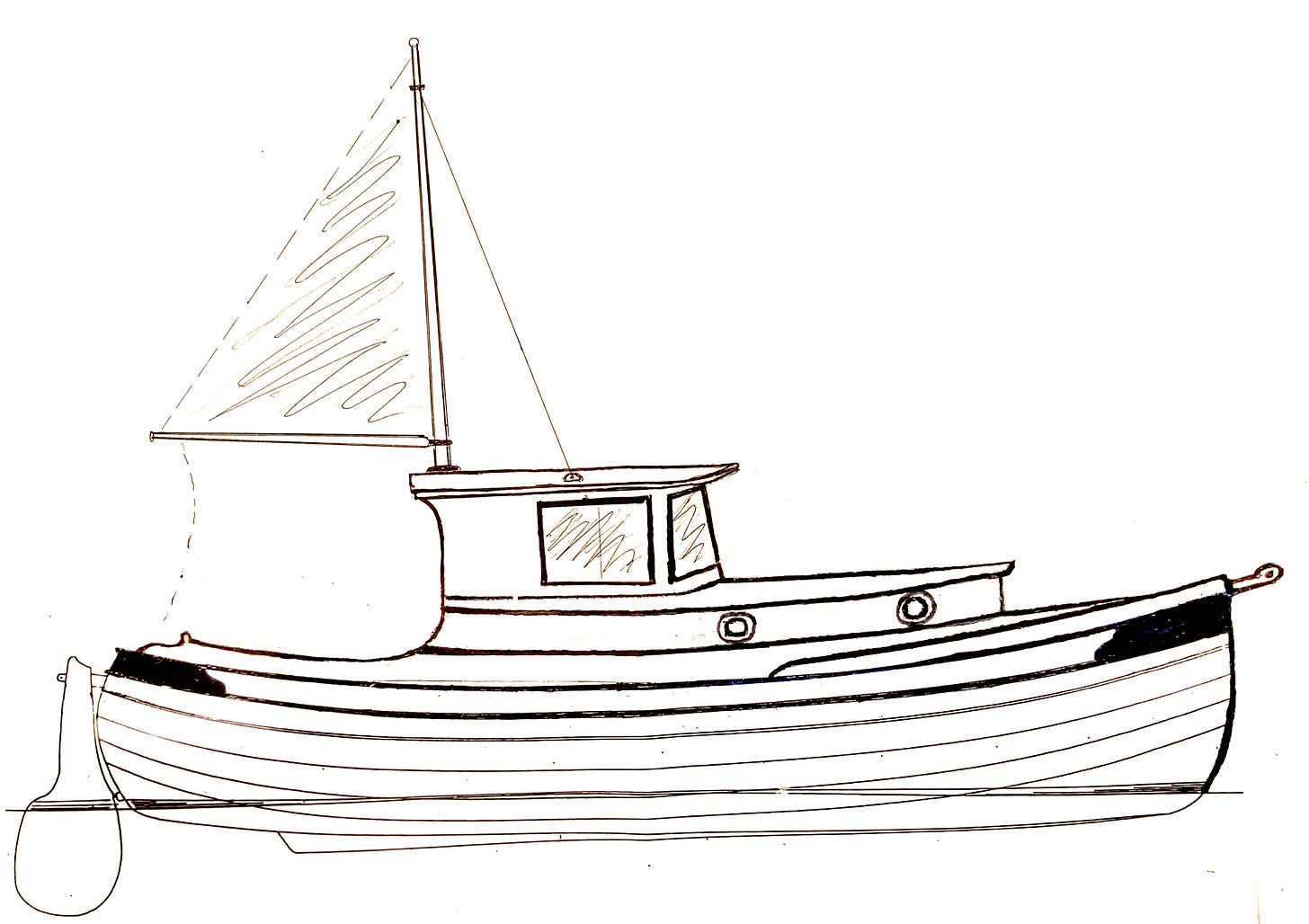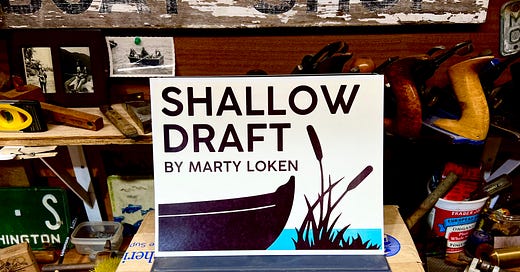Our most recent Shallow Draft (“We Found Our Dreamboat Project,” Feb. 5), introduced a John Welsford-designed 20’ model, the 6-Metre Whaler, a lapstrake beauty that’ll support the cabin and pilothouse we’ve longed to build, either from scratch or atop some existing hull.
Our search has been for a slow, safe camp-cruising trailerboat that would be fuel-efficient, seaworthy and relatively comfortable for week-long cruises by an aging couple (the two of us). We want a boat light enough to tow to dreamy, distant Northwest cruising grounds with our older Toyota pickup—allowing us to enjoy faraway back bays and islands we’d never have time to reach directly by water aboard our larger 6-knot cruiser.

Our concept for the camp-cruising Dreamboat was well-received by most readers, but there were one or two who questioned our plan to convert the Welsford hull into a motorboat…and several who agreed that we should ask John Welsford to weigh in on the subject.
Our thought, exactly! We’ve long admired JW’s designs, with some emphasis on his Navigator, Pathfinder and SCAMP sailboats, and from the moment we spotted the completed 20’ Whaler hull, we wanted John’s evaluation of how the sailboat hull might work under our sketched motorboat cabin.

So, without further introduction, here’s what the designer himself has to say about our plan for a camp-cruising outboard boat:
“Marty, the plan looks great—real Pacific Northwest styling. An 8hp outboard will be more than enough. I’d be inclined to ballast her, probably as much as 80kg or so (180 lbs.) to replace weight in the centerboard, plus a bit more as she could be bouncy without it. Stability-wise, that hull, with its fat bum, has much more stability than the usual symmetrical double-ender, so she’ll carry the extra topside weight without any problem. I’m very pleased to hear of your project, and I know it will be professionally done, which is not the case for too many ‘customizations,’ and I’m sure it will be a success.” - John Welsford
We will follow John’s advice to the letter, with ballast in bilge areas along with a bronze shoe-weighted keel and maybe also short bilge keels to each side for occasional beaching. And as mentioned in the recent column, weight of the added cabin and pilothouse will be as light as possible, using cedar beams and thin marine-mahogany plywood.
Even though JW lives in New Zealand, he has quite a bit of experience cruising our Salish Sea waters, so he understands how and where we plan to camp-cruise with our finished trailerboat.
And finally, for now, if any readers would like to meet John Welsford in person and see a variety of his boats on display, he’ll be attending our first annual Pacific Northwest SMALL BOAT FESTIVAL, July 26-27 at Port Ludlow Marina, near Port Townsend. He and Howard Rice will be at the event together, after having conducted the first boatbuilding workshop focused on JW’s latest SCALLYWAG design—essentially a larger full-cabin version of SCAMP that’s a serious little cruiser. For more on the SMALL BOAT FESTIVAL, see www.pocketyachters.com
Thanks, as always, for reading - Marty




Love it, perfect for the Salish Sea. My musings on a solar electric river cruiser for 2 keep coming back to a modified Long Steps, stretched to maybe 22 feet and with a soft cabin. Walkabout is working great as a solo river boat, the slippery rowing hull is well matched to low power electric. Whaler looks saltier, but would take more power and with more windage from the fixed cabin would be limited by wind.
Looks beautiful. The only concern I would have is that round bilges and double ends have a tendency to be rolly in a seaway.